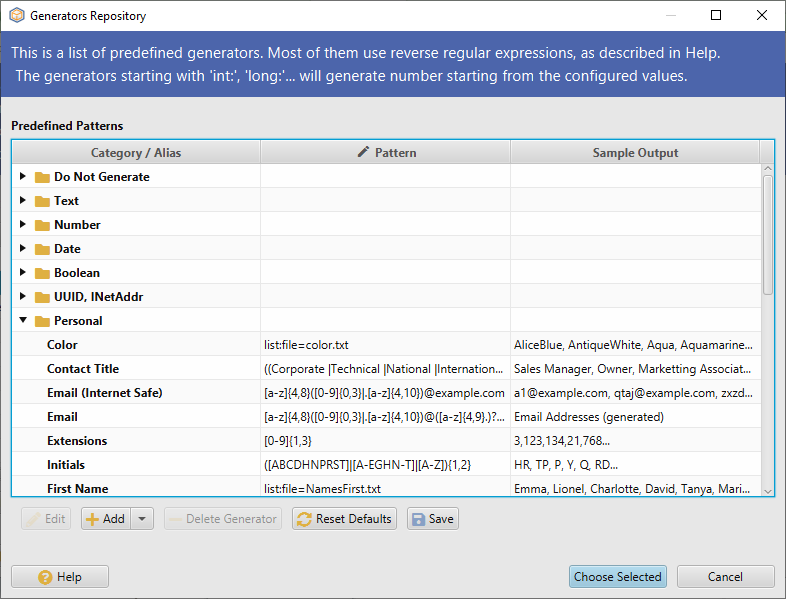


#Random data generator sql code#
You can take the code below and can expand it to fit your needs. A test data generator can help you create dummy data for things like user profiles, credit card data. Finally click on the 'generate' button, you will be redirected to the appropriate data generator.On each page of the different generators, you will also have a user guide to help you. This is great for testing purposes in your application. If you make a mistake, you can click them again to deselect them. With a little bit of work I ended up with over 4 million records in a table with 45 columns. First, click on the fields you want to generate. To test query results I decided that I needed some values in the table that were not random so I simply salted my random data with known data at irregular intervals that would allow for testing. It comes with a price tag of 60 to its users and is compatible with Oracle, DB2, MySQL, SQL. There are dedicated patterns for numbers, date, booleans, starting with a keyword like int, short, sequence, boolean, groovy, etc. join (random.choice (letters) for i in range (length)) return resultstr def. Introduction to Test data generation tool 1. The random generator is using patterns for setting how the generated data should look like. This tool is created to help people who are not familiar with SQL and queries in general but need to create their databases, tables, and fields. Since it is important to test queries on large data sets I thought that I would post how I populated a few data types in my table. import random import string import math def randomString (length): letters string.asciiletters resultstr. This tool is created for developers who want to quickly generate SQL code without the need to write it manually. Recently I had to do some R&D for a project and needed to generate a large table to test performance on.


 0 kommentar(er)
0 kommentar(er)
